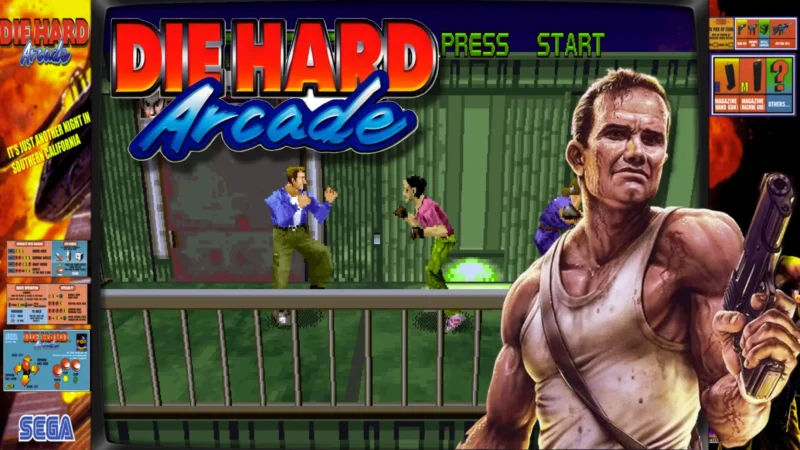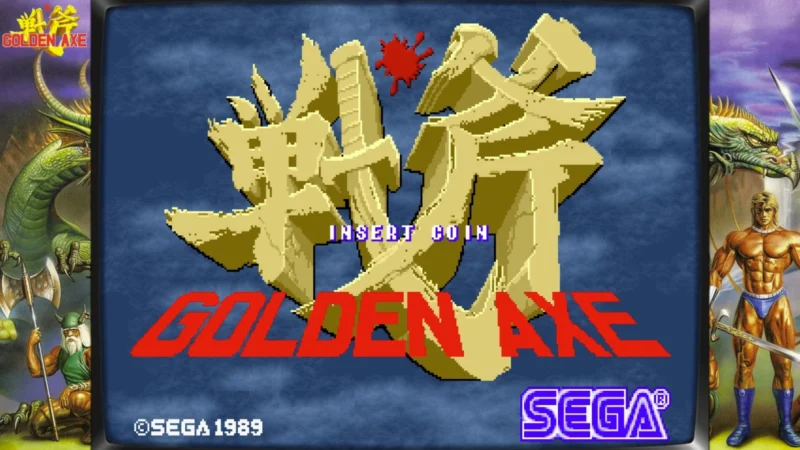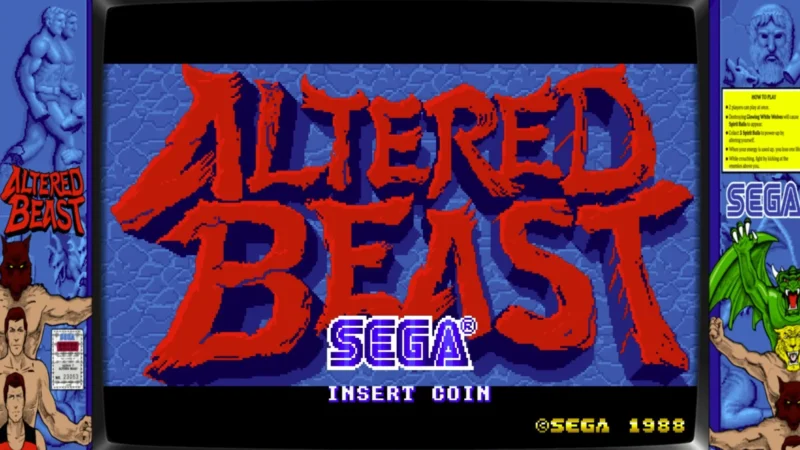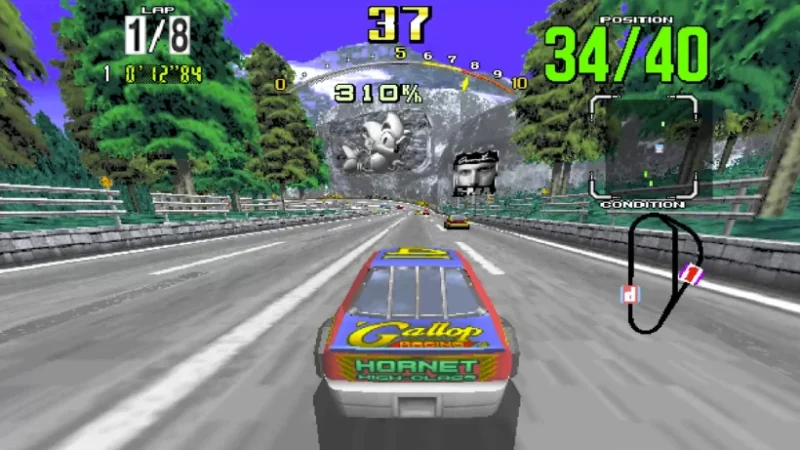Top Skater: History, Gameplay & Legacy
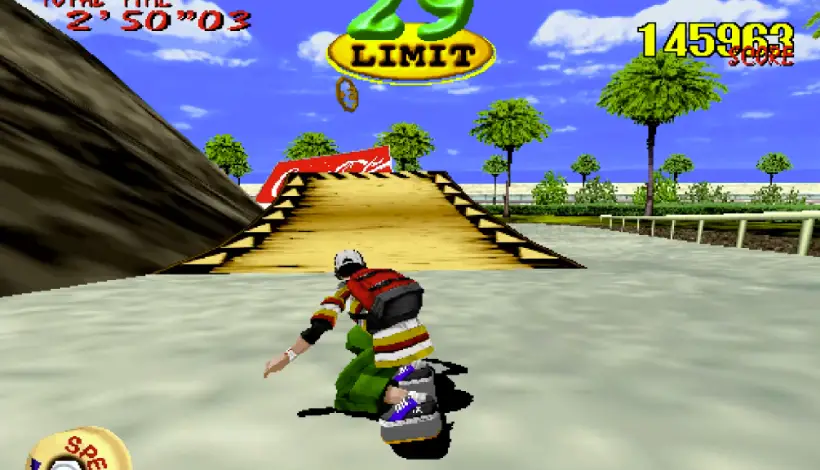
It’s 1998 and I’m waiting to go into the movie theater with my friends. Outside the theater is a decent-sized arcade with many of the hits of the time. Games such as Street Fighter Alpha, Dead or Live, Terminator 2, and many other hits line the outer walls of the arcade. But sitting right in the middle of the room is a giant machine, taking up a 9’x4′ footprint. It’s unmissable. The game’s massive screen sits directly in front of two handrails that house a moving skateboard deck between them. The 90’s punk/ska tunes from Pennywise fill the entire room. The game is Top Skater, and to this day it is one of my favorite arcade games.
But how did such an innovative and massive machine come to be? And what other games did it influence? Well, for those answers we have to go back to the Sega Model 2 days and see how Sega’s AM3 team was pushing the envelope in the mid and late ’90’s.
Development of Top Skater
The development of Top Skater starts with one of the biggest franchises in entertainment, Jurassic Park. Sega Game Director, Kenji Kanno, was coming off mixed success from the rail shooter that put players inside a Jurassic Park Jeep instead of standing in front of a screen. The Jeep seats would move with the game, immersing players into the experience. This 1994 game wasn’t ground-breaking, but it was another step in the direction that arcades were taking at the time, adding new and exciting controls and experiences to arcade cabinets.
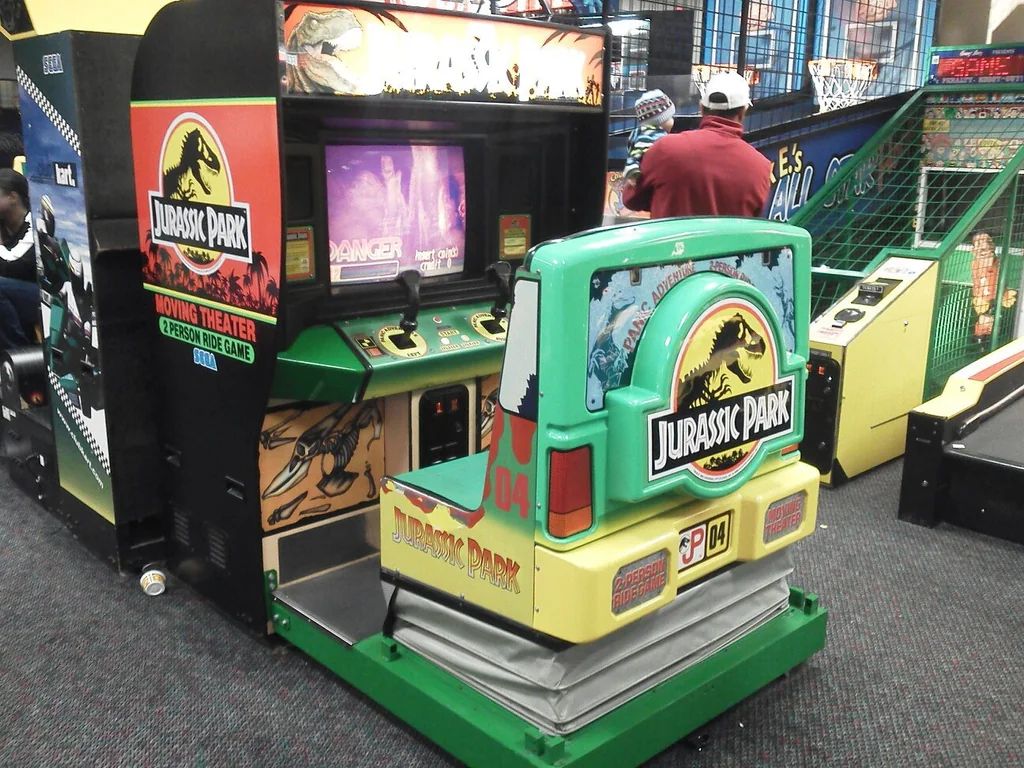
Differentiating Arcades from Home Gaming
The idea of adding a motion-sim element to an arcade game wasn’t entirely new, and one game, R360, enabled players to fly an aircraft with 360 degrees of rotation both horizontal and vertical (I played it in Las Vegas when I was 13 and it was incredibly hard but immensely fun). The push for these new controls and experiences was primarily due to the success of gaming consoles in homes around the world. Where people used to come to arcades for games, they could now stay at home and play. Also, why should someone pay 50 cents or a dollar to play a video game at an arcade when they could buy the game at home and play it as much as they wanted for free?
Arcade developers needed an answer to console games and they found it in immersive experiences and physical activity. Despite lackluster reviews, Jurassic Park had solid success in terms of sales. Players enjoyed being engrossed in the game and feeling every bump along the way.
Jurassic Park‘s success paled in comparison to another immersive Sega arcade classic: Daytona USA. Daytona USA had put people in the cockpit of a stockcar and unleashed them head-to-head with as many as 8 other players in an arcade. It was something you couldn’t get at him in the early ’90’s and it brought people back over and over again.
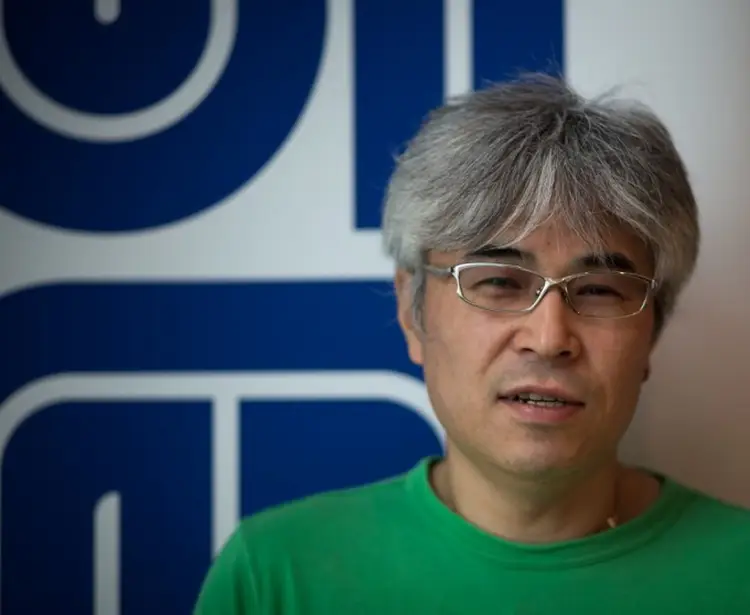
Kenji Kanno and the AM3 team needed something unique to keep arcade games alive and popular.
America! F-Yeah!
Sega wanted to create a new interactive game for young Americans. Having cashed in on the Jurassic Park craze, it was time to hit another mid-1990’s American craze: skateboarding.
The AM3 team got to work on the new skateboarding game. However, they ran into one small problem. Literally none of them knew how to skateboard.1 So they turned to watching videos of skateboarders and going to professional skateboard events. They also talked to a lot of professional skateboarders before they began creating 3D models of different riders and their movements.
“Never Knew Such a Trick Was Possible”
From the beginning, Kanno and the AM3 team knew what the game would NOT be: a simulation. The team would later recount, “What we wanted to do most was to express the cool images we had about skateboarding…The most exciting thing about Top Skater is that you can enjoy unrealistic tricks.”2
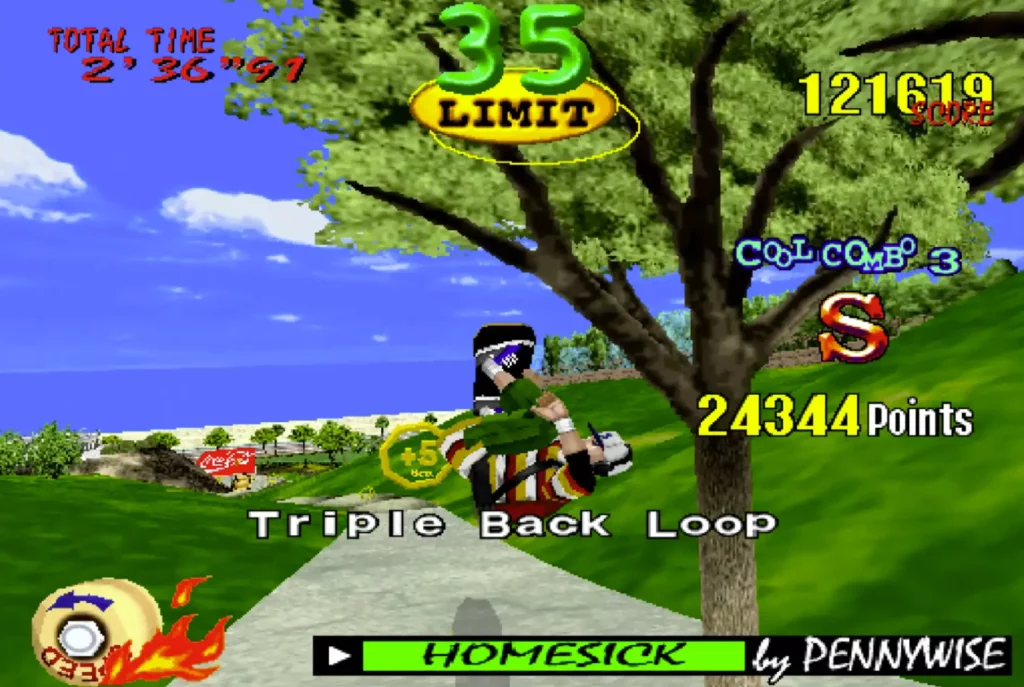
Top Skater was going to be run on the Sega Model 2 platform, which was the 3D hardware powerhouse behind Daytona USA, Virtua Fighter 2 and Virtua Cop. To create games on this platform, Sega had previously utilized motion capture of actual people doing moves and then replicating those movements with 3D polygons. However, for Top Skater, the movements of the skaters were going to be far too complex to use motion capture. “To do such showy tricks would require a vast studio, and we’d need to use some kind of trampoline or something. It would be impossible even for a top skateboarder so we created all the character movements with our own hands,” the AM3 team would later say.2
Would Top Skater be Racing or Trick Focused?
Because it was an arcade game, a time limit of some kind would need to be core to the game (gotta get those players to pump more quarters, you know). Because there would be a timer, many of the development staff at AM3 argued that the game should be a downhill racer, with tricks giving you more speed. “Some people thought that racing was better because it’s easier for the users to understand,” Kanno would say.2
“We kept on discussing which was better, tricks or racing, right up until the final stage.”
In the end, the image of skateboarding for Kanno was doing incredible tricks. Top Skater wouldn’t be a racing game. It would be a game focused on accomplishing tricks to rack up a high score, with a small bonus added for completing the course quickly.
Top Skater has the Most Unique Controller in an Arcade Game
Top Skater has one unmistakable characteristic: it’s skateboard controller.
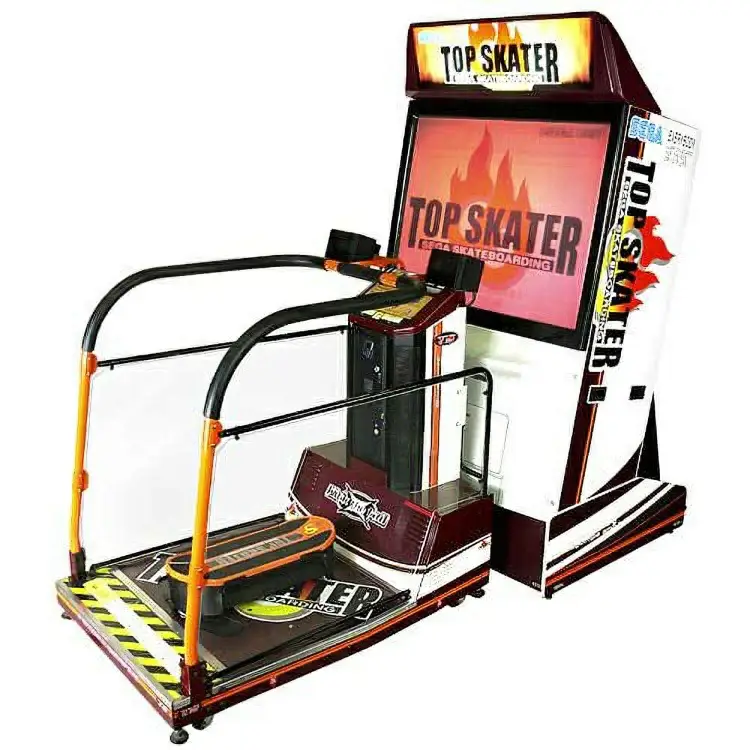
The development of the skateboard controller was a collaboration between the AM3 software team and the AM4 cabinet hardware team. In other games, such as racing simulations, there was little back and forth about what the cabinet’s controls should include. However, for Top Skater, the cabinet controller was going to be just as important as the software being installed in the machine. The teams worked together to figure out how to get a physical skateboard to control the game properly.
“When the player stands on the skateboard it has to be stable and we needed to create a mechanism through which you could enter all of the tricks. There was a lot of discussion between us on these points,” the AM3 team would recall.2 The final design of the skateboard controller wouldn’t come until a month before their first location test.
“By that time, it had already been redesigned several times. We were very nervous because the schedule was very tight.”2
By the time it all came together, the tricks blended seamlessly with the unique controller. The controls took some getting used to, just like real skateboarding, but after a minute or two, even those who had never skateboarded could start getting down the course without crashing too often.
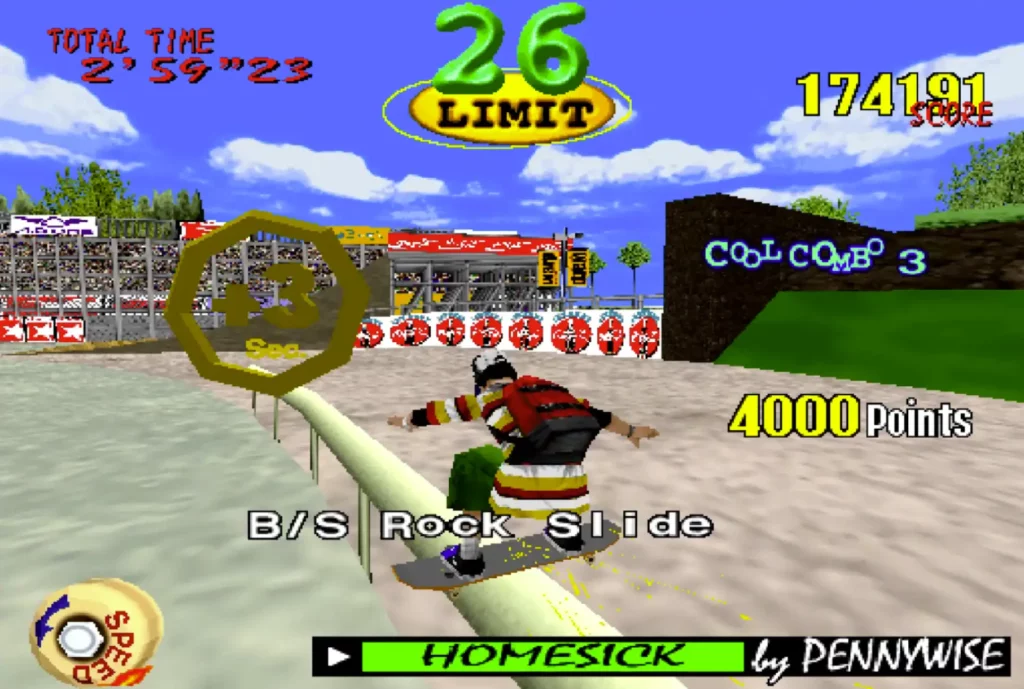
Top Skater Music and Sound
Almost as unique as the skateboard controller is the sound and music of Top Skater. Kanno and team wanted the music to reflect skating culture at the time, and designed the music to be as in-your-face as possible. Kanno was a fan of LA grunge band, Pennywise, and pulled their music into the game. The distinctive tracks are now iconic to fans of the game and anyone who visited arcades regularly in the late ’90’s
The team also spent a lot of time pulling sample sounds for the game, such as the sound of the tail of the board hitting the ground to do an ollie, and the sound of the board tumbling away during a crash. Because pure sound sampling can pick up a lot of background noise, the team also utilized some artificial sounds where necessary. When playing the game though, it’s hard to tell which are sampled and which are artificial.
To bring the sound to life, the team utilized an MPEG board, which had just become affordable enough to put into the cabinet. This gave the team a powerful sound engine that could power two large speakers that were placed directly in front of the rider with subwoofers that thump with each drum beat.
One Big Monitor
Behind the speakers sat a large 50″ Toshiba projection screen, lit from behind, which immersed the player in the game.
Sponsors!
As in real skateboard competitions, there are sponsors all over the place in Top Skater. But the inclusion of real brands on signs and other items in the game make it stand apart from other games and add more realism to it. Brands featured in the game are Coca-Cola, Vans, Airwalk, Reef, and more.
Top Skater Gameplay
Top Skater was designed to be both accessible to those with no skateboarding experience and challenging to even professional skateboarders. The game consists of two courses, Novice and Expert (and a secret ‘Freestyle Course’, but shh…don’t tell anyone). The player starts off going downhill and must reach checkpoints to receive more time, much like a racing game. Along the course are small time bonus “tokens” that can be acquired by hitting ramps or other obstacles at correct angles. The goal is to rack up as many points as possible and make it to the bottom of the course before time runs out.
The player can choose from one of six different characters (plus two hidden characters), each with their own set of over 100 tricks. While many basic tricks are shared among the skaters, many of the more difficult tricks are unique to each character.
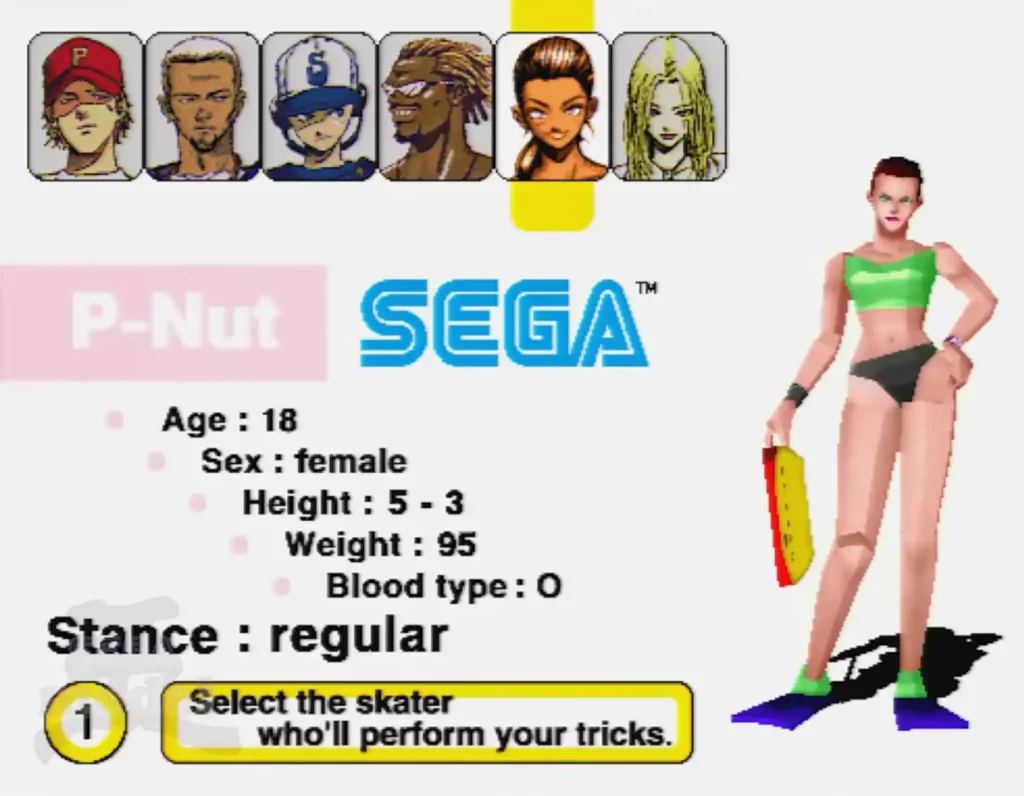
The skateboard controller would unlock when the game started, allowing the player to move the whole board side to side on the to turn quickly or tilt from side to side to get more subtle movement. To do jumps, the player would kick down on the tail of the skateboard to do an ollie or on the nose of the skateboard to do a nollie. The rails on either side of the player helped them keep their balance as they maneuvered the skateboard controller.
The scoring system for the game is mainly based on where the users kick the nose or the tail of the board while on a ramp. The closer the user is to the end of the ramp without going over it, the better their score will be on a scale of E to A, with a perfect trick getting an ‘S’ rating. Most scoring comes from these jumps, but players can also grind rails and other objects, and “bump” barrels placed throughout the course.
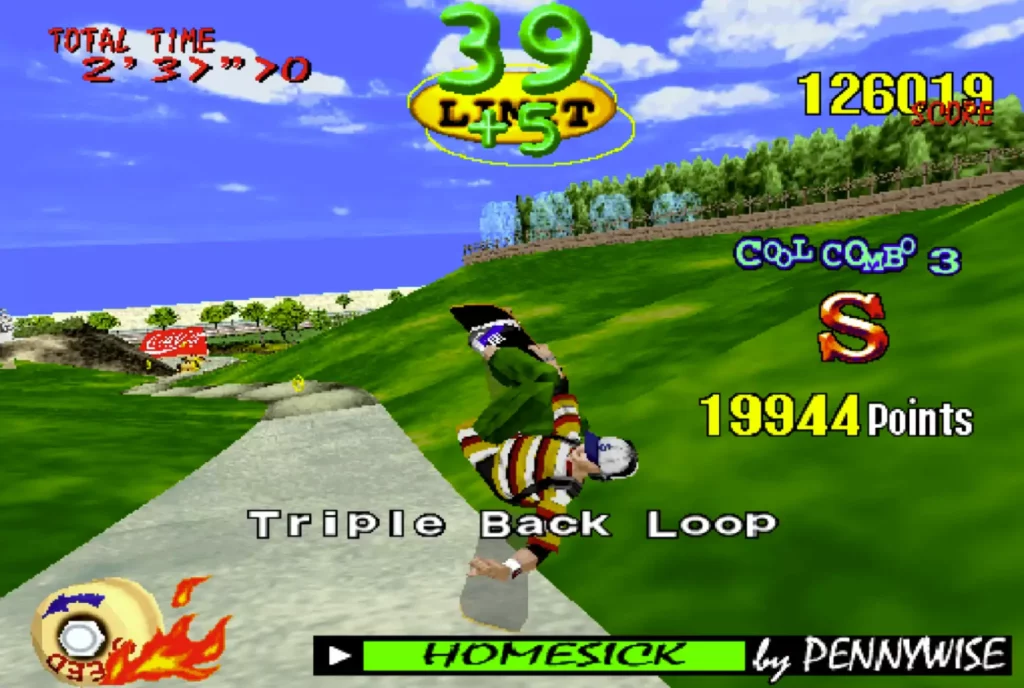
When players perform multiple tricks in quick succession, such as landing a jump and going immediately into a grind or bumping into a barrel, it will trigger a combo and give an increase of 50%-150% of the trick’s normal score. If more combos are landed in a row, a multiplier is increased and then calculated for the total score.3
At the end of the course, the player’s total points are added up along with a bonus for each second remaining on the clock, and they are given a grade, again from E being the worst to S being the best.
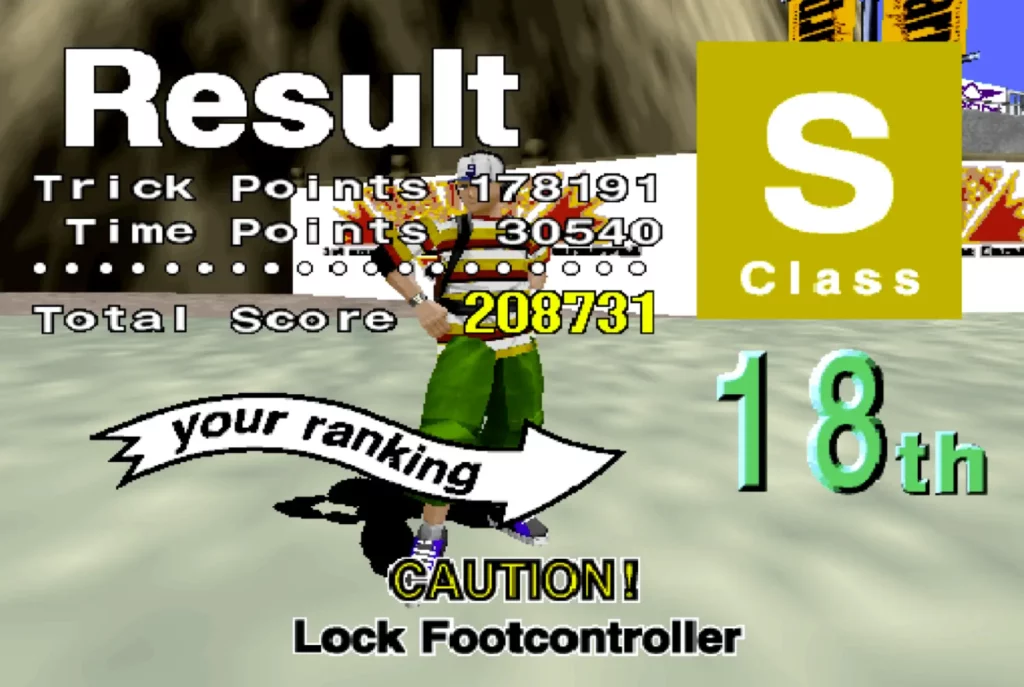
Impact and Legacy
Top Skater was an instant hit. When it debuted at the Sega arcade show it was the most popular game of the event. When it came to arcades in Japan and North America in March of 1997 (worldwide in May of 1997), it was unmissable, and people would crowd around it, watching friends take turns barreling down the courses in search of that coveted S Class rating. The high-energy music of Pennywise would be left as an earworm for everyone who played it.
Stepping onto that board and controlling your player as you careen down the course trying to kick out as many tricks as possible was something that couldn’t be replicated by any home console. Kanno and Sega had done it. They had created an arcade experience that was impossible to get at home.
Kanno would take the adrenaline-inducing formula forward to his next venture, Crazy Taxi, which also featured amazing music and a similar graphic style to Top Skater.
A few years later, a small development shop called Neversoft would be tasked by Activision to create a skateboarding game. The Neversoft team members were big fans of Top Skater (playing it on lunch breaks) and used the game as an influence for their project, which later became Tony Hawk’s Pro Skater.
A spiritual sequel to Top Skater, Air Trix, came out in 2001. Air Trix used a very similar cabinet layout with the skateboard controller and large video monitor, and in a showing of how tightly woven the video game industry is, it borrowed some of the trick combo mechanics of Tony Hawk’s Pro Skater into it.
Should You (and can you) Play Top Skater?
Despite its arcade success, there were no home ports of Top Skater, and for the longest time the only way to play it was to find it in an arcade. Now, with emulation, the game can be found as a ROM and played with a Sega Model 2 emulator. The game is still incredibly fun, but much easier with a handheld controller instead of the skateboard controller. But if you want the original experience, the only way to truly play this game as its intended is to find a working cabinet, which is getting harder and harder to do.
But if you do find a cabinet, it’s worth the buck or two it will cost to relive a piece of video game history that still holds up today.
References:

